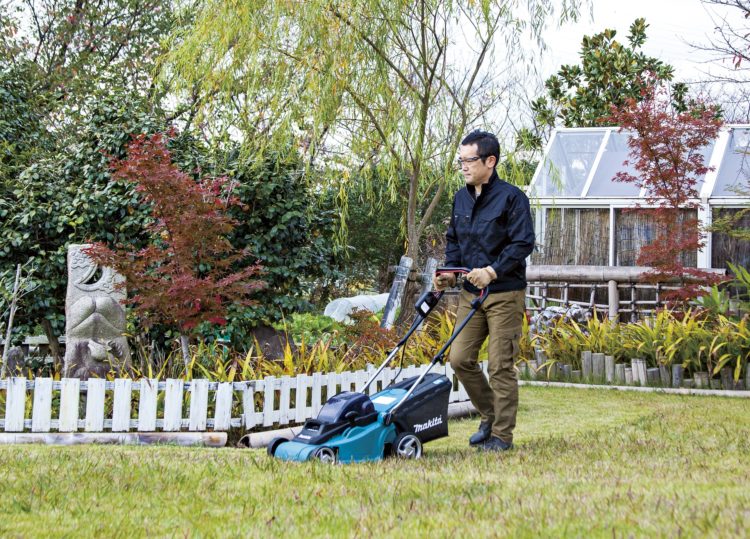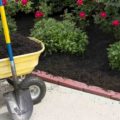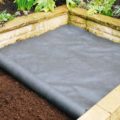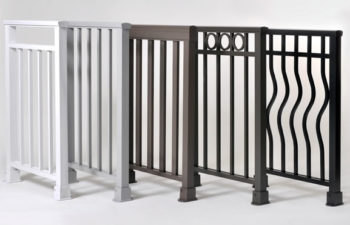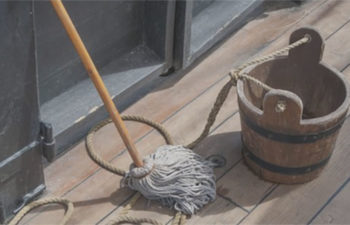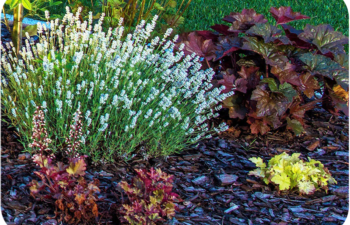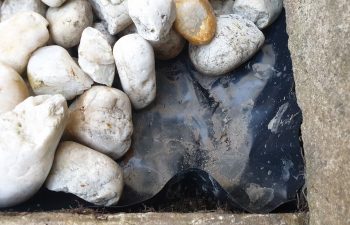Whether you’re preparing to set up a new landscaping element to the backyard or you’re preparing to lay out a veggie garden that is currently covered with grass, the first thing to do is to remove the sod.
You can use various methods to get rid of the grass, but the one that will work best for you will depend on your personal situation.
Generally, the methods that yield faster results will require some effort while the less labor intensive may take up to a season to produce results
Lets List the Top 5 Grass Removal Methods
- Dig
- Till
- Smother
- Solorize
- Poison
Before we explain in detail how to go about each method and list the pros and cons, so you can get a clear understand of the process for each method.
Lets start at the beginning.
What Products Remove Grass?
- Grub hoe
- Sod cutter
- Garden hoses
- Herbicides
You can decide to either use the manual removal or opt for other removal methods such chemical treatments, light deprivation or use of garden machines such as the tiller.
Here are some of the products that you can use to remove the sod.
Grub hoe
For smaller projects, you can use a grub hoe to remove the sod manually. Get a good grub hoe with a blade that is at least 8 inches wide.
This blade will cut through the roots, removing the sod efficiently.
Take short swings that are just enough to penetrate the root layer and walk forward as you work to avoid piling the cut pieces on top of each other.
Sod cutter
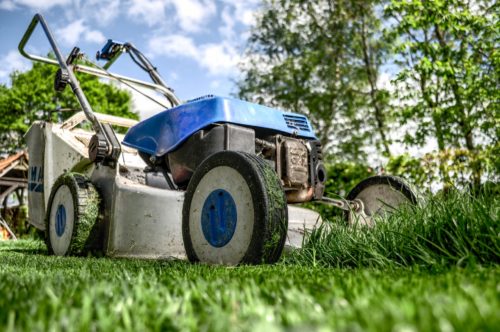
There are various sod cutters available. These include; the square edge sod cutter, the kick sod cutter, and the motorized sod cutter.
The square edge cutter looks like a regular shovel the only difference being having squared edge instead of around one and a short handle.
This cutter will help you to remove a small section of the sod at a time.
The kick sod cutter features two long handles that are anchored with a crossbar. It will help you to remove long and narrow strips that you can roll up easily and remove.
If you are covering a large area, gas powered sod cutter will help you to get the work done faster.
Instead of purchasing the sod cutter, you can rent from a local landscaping company.
Garden hoses
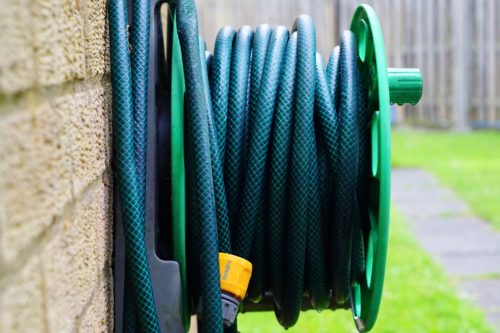
This is mainly used to water the area prior to cutting the sod. If you have already installed an underground irrigation system, this is not required.
Herbicides
You can also use a non-selective post-emergence herbicide to kill the grass before removing it. Follow all the label instruction as well as the safety precautions.
Reasons to Remove a Lawn
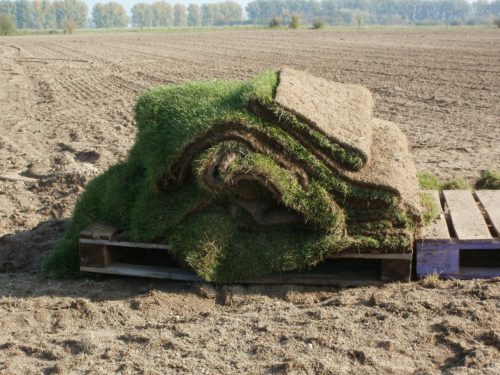
Although you have invested your time, money and effort to maintain your lawns, there are times that you may use the same resources to get rid of the sod.
Here are some of the reasons why you may want to remove sod.
1. When the weeds have outgrown the grass
Sometimes stubborn weeds may outgrow the grass on your lawn even after using various methods to control them.
Weeds make the lawn to look neglected affecting the overall look of your yard.
Overgrown weeds may also act as a breeding ground for rodents and other animals that may destroy your home.
Getting rid of the grass and start afresh may help you to establish a lawn that is easy to maintain.
2. Remove the bare spots
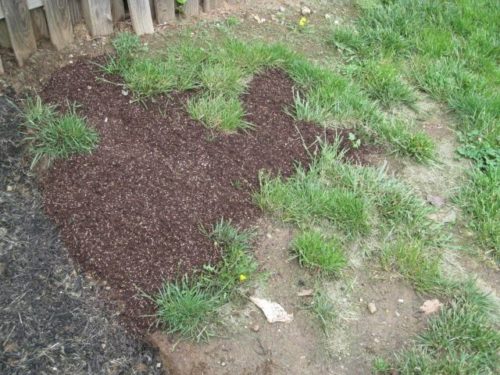
Various things may cause the development of bare spots on the lawn.
This includes lack of enough water, gasoline or fertilizer spills, soil compaction among others.
Removing the already affected grass will help you to install a new sod.
3. Creating a garden bed
Although a lush green lawn is a beautiful thing, a serene Zen garden might be even prettier.
You can get rid of the grass to create a yard that is landscaped with mulch, flowers, and shrubs.
Removing the sod in certain areas helps you to incorporate other features such as a fountain, patio furniture and other land features that will enhance the look of your yard.
4. Get rid of a tired lawn that seems to require a lot of time to maintain
Maintaining a lawn requires a lot of time and energy. Getting rid of the grass will mean that you will never have to mow or water the grass again.
This will also decrease your water consumption considerably. Additionally, lawn mowers, weed killers, fertilizers, and lawn maintenance companies cost a lot of money.
Removing the grass will save you a lot of money.
5. Boost the resale value
Most new homeowners do not love the idea of looking after the grass.
Removing the grass will give you a large yard that you can design large patio and sitting areas that will improve the look of your home.
It also allows you to have a better designed garden, which will boost the resale value of your home.
6. To clear certain areas for a new construction
Additionally, clearing the sod will create space for construction of a new structure.
This may include house extension, creating a storage room or constructing a new additional feature such a stable for your new horse.
Planning to Remove a Lawn
Do not underestimate the lawn removal project. The project will require you to invest a lot of time, effort and money.
Some of the methods to utilize to remove the lawn will have more impact on the environment while others may not be acceptable to your neighbors.
For this reason, you need to find the right balance and get to know the benefits and the side effects of each grass removal method for you to get a method that will meet all your needs.
Here are some of the tips to help you to make the right decision.
• Follow the set guidelines – Follow the set rules by the homeowners association to ensure that your plans do not contradict what governs the sod removal process. For example, there may be a rule restricting the use of certain chemicals to kill grass.
• How fast do you need your sod removed – Make use of the fast sod removal methods such as digging or tilling will help you to remove the grass faster. On the other hand, methods such as chemical treatment, Solarization or smothering may take some time before the grass is completely removed.
• Consider your irrigation system – if you have an underground irrigation system, not all the locations where the underground pipes pass and installation of the sprinkler head to avoid damaging them when tilling or digging.
Related Post: How To Take Care Of A Newly Sodded Lawn?
How to Remove Sod? Try These Top 5 Methods
Here are the various techniques on how to remove sod. Each method has its pros and cons, but all of them will get you closer to having a yard that you have been dreaming of.
Go through each technique to select the one that fits your demands perfectly.
1. Digging
Digging is one of the methods that will yield fast and clean results, allowing you to plant your garden almost immediately.
However, this technique requires you to use a fork and spade to remove the grass, resulting to a lot of sweat and sore muscles.
This method is recommended for small sod removal projects.
Procedure for Digging up Grass
STEP 1: Water the area
Water the area properly a few days before starting. The soil should be moist allowing the hoe to cut the roots easily.
Avoid over watering the area as this could make the soil soggy, making it heavy and difficult to work.

STEP 2: Cut the sod into one foot wide strips
Use a sharp spade or edger to cut the sod into parallel stripes that are about one inch in width.
Divide the strips into 1 to 2-foot length depending on the thickness and density of the turf.
Pry one of the sides of the sod and use a spade to cut the roots and lift the pre-cut piece.
A fork will work best if the soil underneath the sod is very loose as you can shake it back to the surface when lifting the sod.
STEP 3: Roll up the cut strips
You can skip the crosscut step to make work easier. Peel the strip back and rolls them ready to remove them.
If you’re working on a large area, a square edge sod cutter or kick sod cutter will be more efficient.
STEP 4: Inspect the subsoil of the new bed
After you have removed the sod, look and destroy potential pests and larvae. You should also remove the remaining clumps of grass, rocks, and roots.
- Pros
• Allows you to plant immediately
• No use of chemicals
• No emissions caused by use of motorized power tools
• Inexpensive way to remove the grass - Cons
• Labor intensive
• Removes organic matter
2. Tilling
Although breaking the sod using a tiller requires some muscle, it is not labor intensive as digging as the engine of the tiller performs most of the work.
The type of the tiller will depend on the nature of the garden. If it had been worked recently, a small tiller might work perfectly.
However, if the lawn is well established, a heavy-duty tiller is required to do the work. After tilling, shake the soil from remaining clumps of grass and remove it from the bed.
The main benefit of utilizing this method is that the organic matter is retained in the sod.
Additionally, you can plant on the tilled bed almost immediately.
- Pros
• Lesser labor is required when compared to digging
• Retains the organic matter
• Allows for immediate planting - Cons
• Turn the weed seeds exposing them to the newly created bed
• Tilling is difficult in areas where there are many rocks or in clay soils
3. Smothering and Composting
Smothering the weeds using plastics or newspapers may be the simplest way on how to remove grass.
However, this can take several weeks or even months depending on the materials used and time of the year.
Procedure
STEP 1: Lay newspaper or cardboard on the grass.
Cover the grass with these materials and place materials such as leaf mold, grass clippings, compost or mulch on top of these biodegradable materials.
These materials will help to hold the cardboard or newspaper in place.
Lay about 6-8 newspaper printed with black and white ink only since the colored may contain elements that are harmful to the environment.
Although the newspapers will not increase the temperature, it will keep the light, making the chlorophyll to break down.
This will stop the photosynthesis, killing the grass.
STEP 2: Use of light excluding plastics
Secure the edges of the plastic and spread them over your lawn. The plastic will increase the temperature while keeping the light out.
This will make the grass to die after some time. Remember to remove the plastics, as they are not biodegradable.
- Pros
• Very little effort is used as you do not have to dig to remove the sod
• Retains the organic matter
• The method does not disrupt the soil structure - Cons
• Takes some time to kill the grass causing delays for planting new plants
• Plastics kill the beneficial microorganisms.
4. Killing sod with chemicals
Procedure
STEP1: Choose a suitable herbicide to kill the sod
Select an herbicide that is specially formulated to kill grass. You can easily find them in most home and garden stores.
If you are not sure which one to pick, talk to one of the representatives at the local garden to help you decide which will work best.
STEP 2: Follow directions to apply the herbicides
Herbicides are poisonous, so you need to be careful while doing the application.
Follow the directions strictly and ensure you only administer the recommended quantity through the right application procedure.
Wear protective clothing to avoid direct contact with the herbicides.
Additionally, do not apply the herbicides if there is rain forecast as it can wash the herbicide into rivers or cause damage to the surrounding ecosystem.
STEP 3: If need, use several applications to kill the grass completely
The herbicides will not have the same effect on all sod, as some varieties are more resistant than others are.
If the grass is more resilient, several applications are needed to kill it completely.
- Pros
• Easier than tilling and digging
• You can use it to cover large areas - Cons
• Risk damage to nearby plants
• May result into environmental contamination
• May lead to personal injury especially if you do not have recommended protective wear
5. Removing a Lawn with Solarization
Solarization process makes use of the heat from the sun to kill the grass.
A hot summer is the best time to perform this technique, as it requires lots of direct sunlight and high temperature.
You will use the plastic sheets just like in the smothering technique only that you will use clear plastic sheeting this time.
Use a light plastic sheeting to cover the area and leave the area covered up to 8 weeks.
After the grass is dead, you can either decide to remove it or till to incorporate it into the soil.
Tilling should be light to avoid bringing soil that has weed seeds, pathogens, and viable roots
- Pros
• An efficient way of killing the grass without much labor
• Tilling the grass will incorporate it into the soil for more organic matter
• Cheaper way when compared to the other means - Cons
• Kill beneficial organisms
• Leads to delayed planting as it will take some time for the grass to die
Conclusion
What to do after removing the sod will depend on the goal that you have for your landscape.
If you want to start a new lawn, use the best grass for your soil and climate.
However, if you want something different from a lawn, you have a wide variety of choices.
Please share with us some thoughts about the article and some of the creative landscaping ideas after removing the grass.
Related Post: More DIY Ideas For Landscaping
